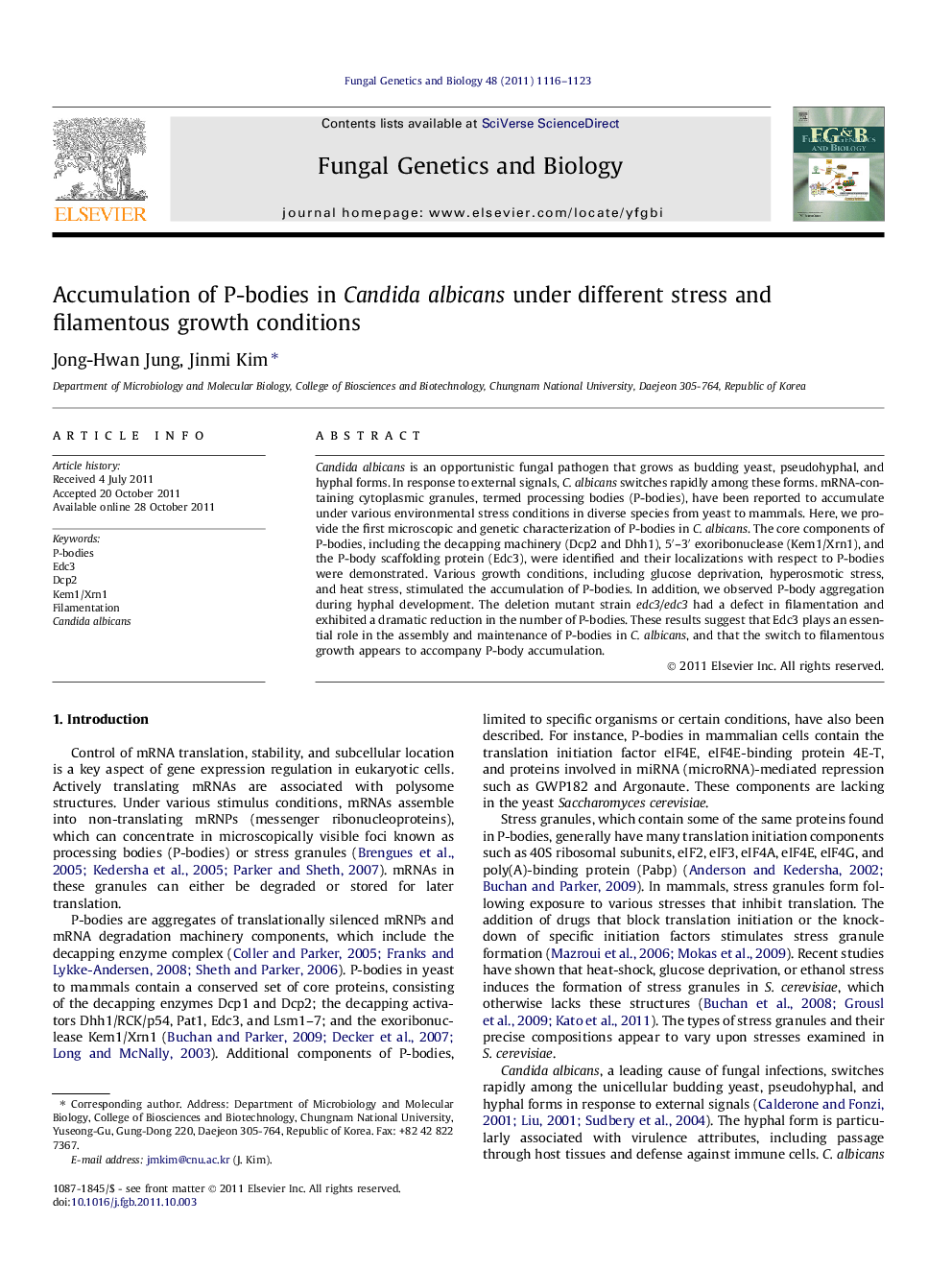| Article ID | Journal | Published Year | Pages | File Type |
|---|---|---|---|---|
| 2180933 | Fungal Genetics and Biology | 2011 | 8 Pages |
Candida albicans is an opportunistic fungal pathogen that grows as budding yeast, pseudohyphal, and hyphal forms. In response to external signals, C. albicans switches rapidly among these forms. mRNA-containing cytoplasmic granules, termed processing bodies (P-bodies), have been reported to accumulate under various environmental stress conditions in diverse species from yeast to mammals. Here, we provide the first microscopic and genetic characterization of P-bodies in C. albicans. The core components of P-bodies, including the decapping machinery (Dcp2 and Dhh1), 5′–3′ exoribonuclease (Kem1/Xrn1), and the P-body scaffolding protein (Edc3), were identified and their localizations with respect to P-bodies were demonstrated. Various growth conditions, including glucose deprivation, hyperosmotic stress, and heat stress, stimulated the accumulation of P-bodies. In addition, we observed P-body aggregation during hyphal development. The deletion mutant strain edc3/edc3 had a defect in filamentation and exhibited a dramatic reduction in the number of P-bodies. These results suggest that Edc3 plays an essential role in the assembly and maintenance of P-bodies in C. albicans, and that the switch to filamentous growth appears to accompany P-body accumulation.
► The P-body components such as Dcp2, Dhh1, and Edc3 were identified in C. albicans. ► P-body accumulation was observed under stress and hyphal conditions. ► Deletion of EDC3 caused a dramatic reduction in the number of P-bodies. ► The edc3/edc3 strain showed a defect in filamentation.
